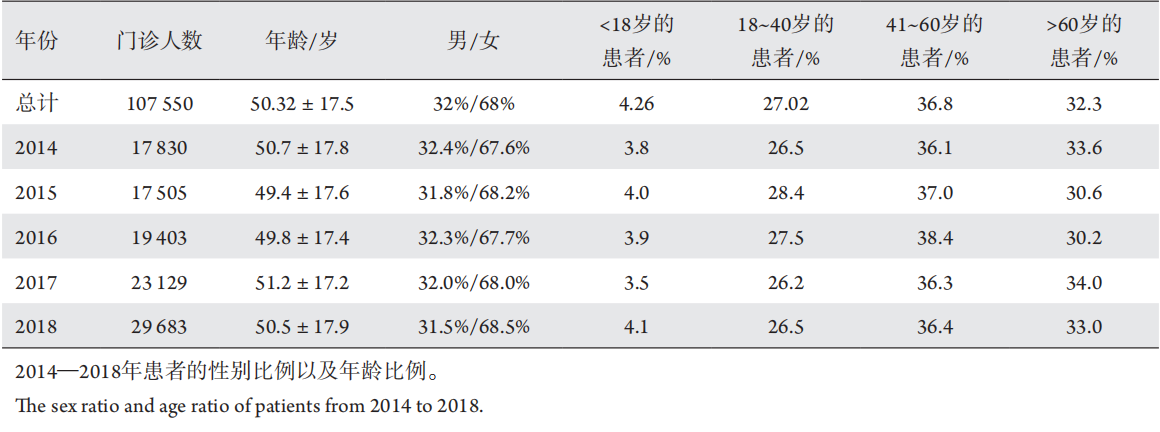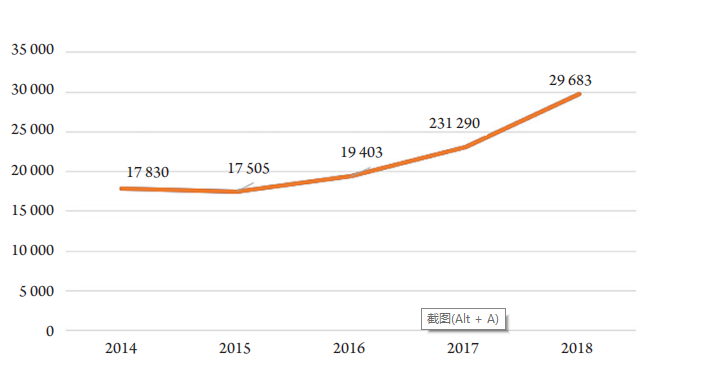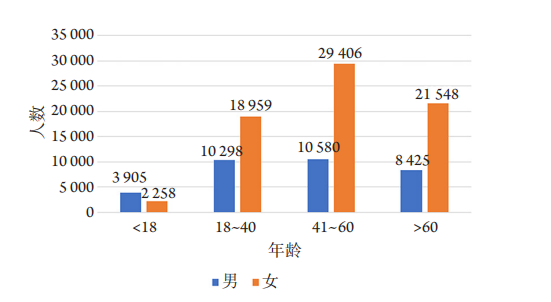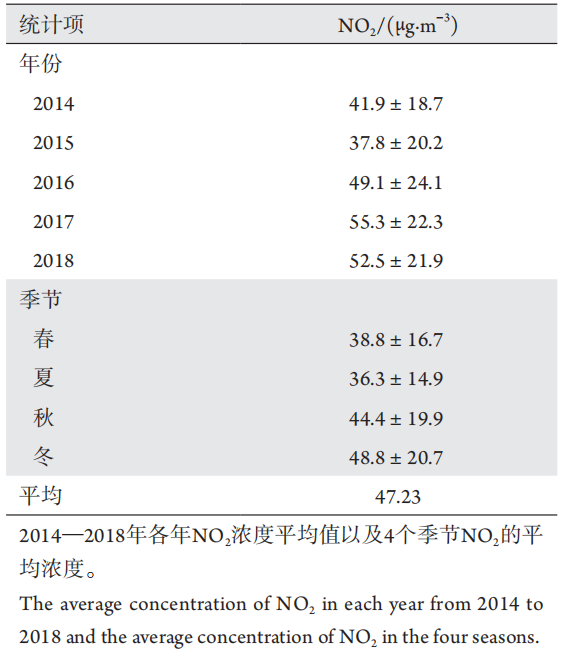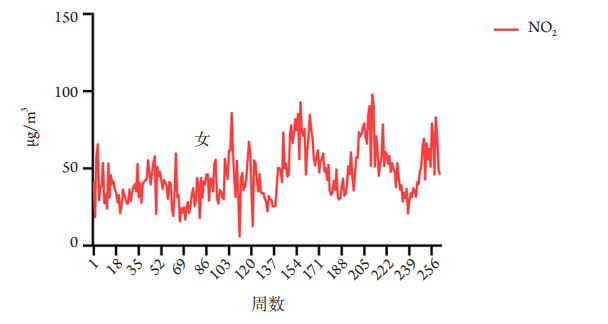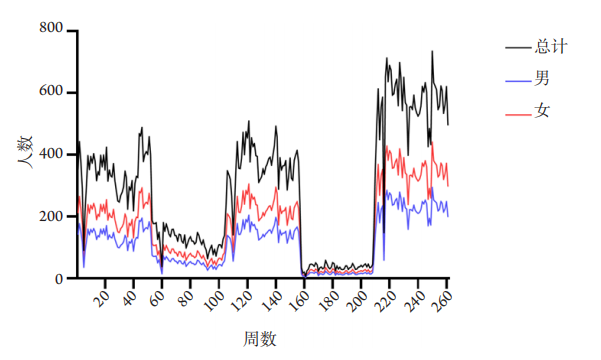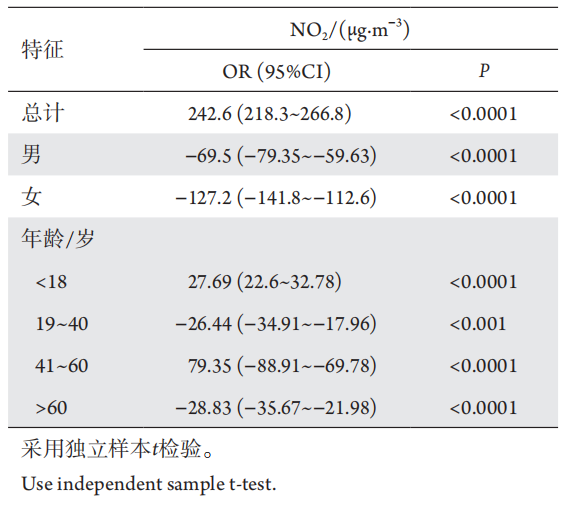1、阐海东, 陈秉衡. 我国大气颗粒物暴露与人群健康效应的关
系[ J]. 环境与健康, 2002, 19(6): 422-424.
CHAN HD , CHEN BH. The relationship between
atmospheric particulate matter exposure and population health effects
in China[ J]. Environment and Health, 2002, 19(6): 422-424.阐海东, 陈秉衡. 我国大气颗粒物暴露与人群健康效应的关
系[ J]. 环境与健康, 2002, 19(6): 422-424.
CHAN HD , CHEN BH. The relationship between
atmospheric particulate matter exposure and population health effects
in China[ J]. Environment and Health, 2002, 19(6): 422-424.
2、Chang CJ, Yang HH, Chang CA, et al. Relationship between air
pollution and outpatient visits for nonspecific conjunctivitis[ J]. Invest
Ophthalmol Vis Sci, 2012, 53(1): 429-433.Chang CJ, Yang HH, Chang CA, et al. Relationship between air
pollution and outpatient visits for nonspecific conjunctivitis[ J]. Invest
Ophthalmol Vis Sci, 2012, 53(1): 429-433.
3、Gao ZX, Song XL, LI SS, et al. Assessment of DNA damage and cell
senescence in corneal epithelial cells exposed to airborne particulate
matter (PM2.5) collected in Guangzhou, China[ J]. Invest Ophthalmol
Vis Sci, 2016, 57(7): 3093-3102.Gao ZX, Song XL, LI SS, et al. Assessment of DNA damage and cell
senescence in corneal epithelial cells exposed to airborne particulate
matter (PM2.5) collected in Guangzhou, China[ J]. Invest Ophthalmol
Vis Sci, 2016, 57(7): 3093-3102.
4、Hong J, Zhong T, Li H, et al. Ambient air pollution, weather changes,
and outpatient visits for allergic conjunctivitis: A retrospective registry
study[ J]. Sci Rep, 2016(6): 23858.Hong J, Zhong T, Li H, et al. Ambient air pollution, weather changes,
and outpatient visits for allergic conjunctivitis: A retrospective registry
study[ J]. Sci Rep, 2016(6): 23858.
5、Liu ZG, Peng J. Normalization of diagnosis and management of dry
eye[ J]. Chin J Exp Ophthalmol Res, 2008, 26(3): 161-164.Liu ZG, Peng J. Normalization of diagnosis and management of dry
eye[ J]. Chin J Exp Ophthalmol Res, 2008, 26(3): 161-164.
6、Kanangara JP, Galor A, Levitt RC, et al. Characteristics of ocular pain
complaints in patients with idiopathic dry eye symptoms[ J]. Eye
Contact Lens, 2016, 43(3): 192.Kanangara JP, Galor A, Levitt RC, et al. Characteristics of ocular pain
complaints in patients with idiopathic dry eye symptoms[ J]. Eye
Contact Lens, 2016, 43(3): 192.
7、Sullivan BD, Crews LA, Messmer EM, et al. Correlations between
commonly used objective signs and symptoms for the diagnosis of dry
eye disease: clinical implications[ J]. Acta Ophthalmol, 2016, 92(2):
161-166.Sullivan BD, Crews LA, Messmer EM, et al. Correlations between
commonly used objective signs and symptoms for the diagnosis of dry
eye disease: clinical implications[ J]. Acta Ophthalmol, 2016, 92(2):
161-166.
8、Schaumberg DA, Sullivan DA, Dana MR. Epidemiology of dry eye
syndrome[ J]. Adv Exp Med Biol, 2002, 506: 989-998.Schaumberg DA, Sullivan DA, Dana MR. Epidemiology of dry eye
syndrome[ J]. Adv Exp Med Biol, 2002, 506: 989-998.
9、Moss SE, Klein R, Klein BE. Prevalence of and risk factors for dry eye
syndrome[ J]. Arch Ophthalmol, 2000, 118(9): 1264-1268.Moss SE, Klein R, Klein BE. Prevalence of and risk factors for dry eye
syndrome[ J]. Arch Ophthalmol, 2000, 118(9): 1264-1268.
10、Schein OD, Munoz B, Tielsh JM, et al. Prevalence of dry eye among the
elderly[ J]. Am J Ophthalmol, 1997, 124: 723-728.Schein OD, Munoz B, Tielsh JM, et al. Prevalence of dry eye among the
elderly[ J]. Am J Ophthalmol, 1997, 124: 723-728.
11、Franck C, Palmvang IB, Boge I. Break-up time and lissamine green
epithelial damage in office eye syndrome[ J]. Acta Ophthalmol, 1993,
71: 62-64.Franck C, Palmvang IB, Boge I. Break-up time and lissamine green
epithelial damage in office eye syndrome[ J]. Acta Ophthalmol, 1993,
71: 62-64.
12、Citterio A, Sinforiani E, Verri A, et al. Neurological symptoms of the
sick building syndrome: analysis of a questionnaire[ J]. Funct Neurol,1998, 13: 225-230.Citterio A, Sinforiani E, Verri A, et al. Neurological symptoms of the
sick building syndrome: analysis of a questionnaire[ J]. Funct Neurol,1998, 13: 225-230.
13、Tsubota K, Nakamori K. Effects of ocular surface area and bl ink rate on
tear dynamics[ J]. Arch Ophthalmol, 1995, 113: 155-158.Tsubota K, Nakamori K. Effects of ocular surface area and bl ink rate on
tear dynamics[ J]. Arch Ophthalmol, 1995, 113: 155-158.
14、Toda I, Fujishima H, Tsubota K. Ocular fatigue is the major symptom
of dry eye[ J]. Acta Ophthalmol, 1993, 71: 347-352.Toda I, Fujishima H, Tsubota K. Ocular fatigue is the major symptom
of dry eye[ J]. Acta Ophthalmol, 1993, 71: 347-352.
15、Schein OD, Tielsch JM, Munoz B, et al. Relation between signs and
symptoms of dry eye in the elderly[ J]. Ophthalmology, 1997, 104:
13951401.Schein OD, Tielsch JM, Munoz B, et al. Relation between signs and
symptoms of dry eye in the elderly[ J]. Ophthalmology, 1997, 104:
13951401.
16、Matsuda M, Bonatti R, Marquezini MV, et al. Lacrimal cytokines
assessment in subjects exposed to different levels of ambient air
pollution in a large metropolitan area[ J]. PLoS One, 2015, 10(11):
e0143131.Matsuda M, Bonatti R, Marquezini MV, et al. Lacrimal cytokines
assessment in subjects exposed to different levels of ambient air
pollution in a large metropolitan area[ J]. PLoS One, 2015, 10(11):
e0143131.
17、Wakamatsu TH, Dogru M, Matsumoto Y, et al. Evaluation of lipid
oxidative stress status in Sjogren syndrome patients[ J]. Invest
Ophthalmol Vis Sci, 2013, 54(1): 201-210.Wakamatsu TH, Dogru M, Matsumoto Y, et al. Evaluation of lipid
oxidative stress status in Sjogren syndrome patients[ J]. Invest
Ophthalmol Vis Sci, 2013, 54(1): 201-210.
18、Thomas J, Jacob GP, Abraham L, et al. The effect of smoking on the
ocular surface and the precorneal tear film[ J]. Australas Med J, 2012,
5(4): 221-226.Thomas J, Jacob GP, Abraham L, et al. The effect of smoking on the
ocular surface and the precorneal tear film[ J]. Australas Med J, 2012,
5(4): 221-226.
19、Ward SK, Dogru M, Wakamatsu T, et al. Passive cigarette smoke
exposure and soft contact lens wear[ J]. Optom Vis Sci, 2010, 87(5):
367-372.Ward SK, Dogru M, Wakamatsu T, et al. Passive cigarette smoke
exposure and soft contact lens wear[ J]. Optom Vis Sci, 2010, 87(5):
367-372.
20、Yao XL, Peng QH, Peng J, et al. Effects of extract of Buddleja officinalis
on partial inflammation of lacrimal gland in castrated rabbits with dry
eye[ J]. Int J Ophthalmol, 2010, 3(2): 114-119.Yao XL, Peng QH, Peng J, et al. Effects of extract of Buddleja officinalis
on partial inflammation of lacrimal gland in castrated rabbits with dry
eye[ J]. Int J Ophthalmol, 2010, 3(2): 114-119.
21、Sang BH, Yang HK, Hyon JY, et al. Association of dry eye disease with
psychiatric or neurological disorders in elderly patients[ J]. Clin Interv
Aging, 2017, 12: 785-792.Sang BH, Yang HK, Hyon JY, et al. Association of dry eye disease with
psychiatric or neurological disorders in elderly patients[ J]. Clin Interv
Aging, 2017, 12: 785-792.
22、Samet JM, Zeger SL, Dominici F, et al. The national morbidity,
mortality, and air pollution study. Part II: morbidity and mortality
from air pollution in the United States[ J]. Res Rep Health Eff Inst,
2000, 94: 5-70.Samet JM, Zeger SL, Dominici F, et al. The national morbidity,
mortality, and air pollution study. Part II: morbidity and mortality
from air pollution in the United States[ J]. Res Rep Health Eff Inst,
2000, 94: 5-70.

